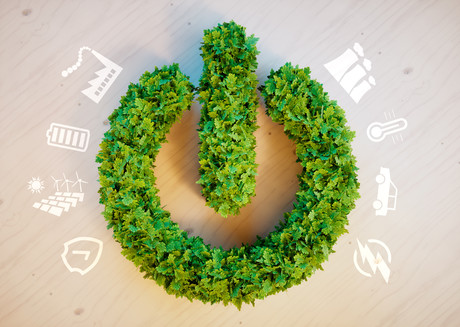The timeframe of value: rethinking ROI leads to investment in efficiency

Today we live in an incredibly important time to be discussing Australia’s sustainable energy future. Early July saw the South Australian government announced plans to build the world’s largest lithium-ion battery within 100 days in an attempt to resolve ongoing concerns for the region’s energy security — an announcement which resulted in widespread media coverage and expressions of public support from around the world.
Unquestionably, these large-scale, centralised renewable energy storage and generation projects are exciting and significant milestones towards a more sustainable future, and need to be celebrated as they occur. However, equally as important are the ongoing investments being made to secure a sustainable future by residential, commercial and industrial energy consumers every day.
According to the Green Building Council of Australia, the built environment accounts for roughly 23% of Australia’s greenhouse gas emissions. With a grasp of this significance in mind, it’s absolutely evident that we need to pay attention to the sustainable solutions which offer a distributed approach to improving the efficiency of our existing building stock.
In support of this statement is the recently released Finkel Review, formally known as the Independent Review into the Future Security of the National Electricity Market, which was led by Australia’s Chief Scientist, Dr Alan Finkel.
The report itself comprises numerous recommendations for achieving a clean, reliable and affordable energy future for our nation. However, it’s worth paying attention to one section in particular, which highlights the increased role to be played by energy efficiency in solving our nation’s current energy challenges.
The importance of this section was echoed by The Property Council of Australia, whose official response to the review saw an emphasis placed on finding efficiencies in the existing built environment, noting that this area has massive potential to assist in advancing the priorities of improving energy reliability, affordability and emissions reductions.
In fact, the Property Council’s estimates suggest that almost $20 billion in financial savings could be achieved by 2030 through the implementation of policy measures that encourage energy efficiency and on-site generation in buildings — which in turn would play a major role in limiting peak demand and reducing energy consumption.
With such strong endorsements, the question shouldn’t be whether we incentivise consumers to invest in more efficient facilities, but how we go about doing so.
According to Cisco, there will be 50 billion devices connected to the internet by 2020 — from smart lights that turn off when you’re not home through to connected heating, ventilation and air-conditioning (HVAC) systems that talk together to create the optimal working environment based on inputs such as personalised preferences and real-time building occupancy.
These networked devices are increasingly prevalent in all aspects of today’s society and together are contributing to a paradigm shift that is changing the way we measure and demonstrate the value of going green.
Where previously greener infrastructure was seen as ethical but expensive, today’s smart devices are able to help demonstrate their own value through measurable increases in operational efficiencies and, subsequently, ongoing cost savings.
According to the International Engineering Consortium, only about 25% of the total life cycle cost of buildings occurs during the design and construction phase — a staggeringly insignificant figure when considering the total life cycle of a building.
This is shifting conversations about the value of initial investment in more efficient builds from a focus on short-term ROI to a focus on the total cost of ownership across a project’s full life cycle. While this is primarily applicable to new buildings, there are similar developments happening within the existing building market with opportunities for retrofitting that will drastically improve the efficiency of older buildings.
Networking connected devices through an intelligent building management system is allowing existing facilities to manage in real time the way they use their energy. This means that consumers can use their phone or tablet to directly control the environments in which they work.
This has implications far bigger than just making life more comfortable for the end user. For energy providers, this signals a new opportunity to directly incentivise users — through cost savings, for example — to modify their behaviours and improve efficiency in real time.
Not only does this improve the efficiency of a facility, offering the consumers cost savings, it also helps improve the viability of renewable energy sources, which may have traditionally struggled under peak demand periods, by reducing the overall demand.
Overall, exciting trends in the uptake of new technology — such as distributed renewable generation through rooftop solar panels, on-site storage through batteries, and drivers of improved efficiency like intelligent building management systems — are all contributing to a greener future by improving the efficiency not only of our buildings, but of our entire grid.
With a revitalised approach to our national energy strategy that involves active participation from our energy consumers in achieving a sustainable future, Australia truly can drastically improve the chances of a near-future powered by the fifth fuel: energy efficiency.

2024 Thought Leaders: Cuong Vo
Bürkert Australia's General Manager expects growing demand for customised automation...
How to navigate Australia’s new climate regulations
Australia’s new mandatory climate reporting regulations are set to take effect next year,...
A concrete use for carpet fibres
Australian engineers have come up with an unexpected use for discarded carpets: as a means to...







